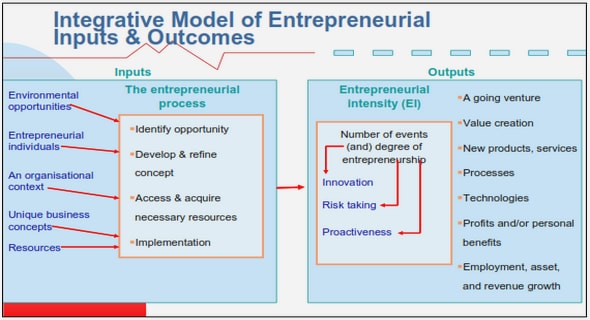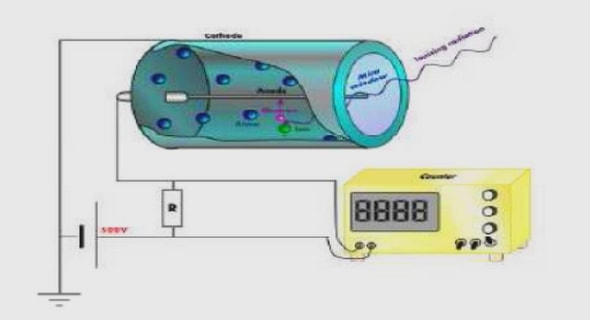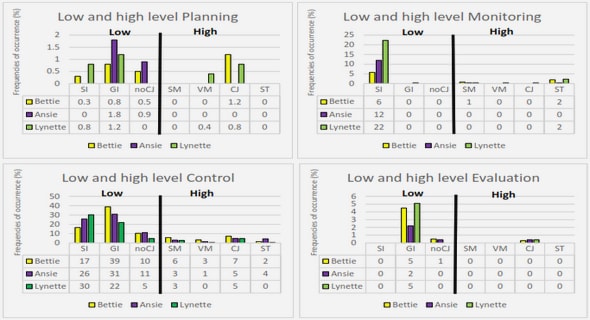Get Complete Project Material File(s) Now! »
Railroad vehicles
Research on possible improvements in energy consumption for trains has started in 1968, when Ichikawa [70] published a paper in which he uses a numerical method to solve the trajectory optimization problem of a train going from one station to another in a xed time. He does not quantize his reductions in energy consumption, but rather sees his work as a motivation for a growing research in this eld that would help save a large amount of energy in transportation. Following this publication, as desired by Ichikawa, research in train velocity prole optimization grew. Starting in the 1980s there were two main research teams starting to investigate the advantages of velocity prole optimization. Golovitcher [71], rst in Russia later in the US, discusses the optimization issue in his publications between 1982 and 2003, while Howlett’s group [15, 72] in Australia published on the same matter between 1980 and 2009. Both use Pontryagin’s Maximum Principle to solve the problem.
Golovitcher nds that optimal control has to be a combination of 5 states, namely: FB (full braking), PB (partial braking), C (coast), PP (partial power), FP (full power). Howlett [15, 72] on the other hand identies the optimal control for a track without slope to consist of the sequence power, hold, coast, brake. Dependent on the desired nal time the length of the coast phase changes. In Figure 2.11 various optimal velocity trajectories to drive a distance of 10000m for desired nal times can be seen. In red here the velocity prole chosen if time is supposed to be minimized.
While both of their initial works were on trains without energy regeneration after 1990 their simulations included energy recuperation of the electric locomotive. Since 2004 Miyatake [16, 73] published several papers on optimization of velocity proles of trains. In his analysis he uses a dynamic programming approach in a three dimensional way, as seen in Figure 2.12. This gave him more freedom to introduce constraint and his work shows that several factors, e. g. the internal resistance of the capacitor, have eects on the results.
Direct and inverse modeling
To simulate dynamic systems there are two dierent modeling approaches that can be applied. Using direct modeling the system is modeled with its natural input, following the energetic ow, to the output. Inverse modeling is what we call a model, where the inputs and outputs of the system are inverted. This means that we assume an output, back-calculate component operation opposed to the energy ow, to identify the required input.
Figure 3.1 shows the dierence between the two modeling approaches for the speci c case of a road vehicle. In the upper graph the direct modeling method can be seen. The driver species the inputs to the system, which are accelerator pedal, brake pedal, possibly clutch and gear, and auxiliary use. With these inputs the drive train operation can be computed, and the drive torque propelling the vehicle is determined. The output of the model is a resulting vehicle speed and acceleration.
In the inverse modeling approach a desired vehicle operation is specied as input. The chassis and drive train component operation is back calculated to identify the necessary power output from each component. In a conventional vehicle, for example, the engine operating point is computed; in an electric vehicle the electric machine operation is calculated. With this the energy consumption of the vehicle can be computed for a given vehicle operation.
An advantage of inverse modeling is to eliminate the human driver in the computation process. Component operation can be computed for an exact vehicle operation without uncertainties due to the human driver behavior (driver feedback that enables a specied prole to be tracked). However, in order to uniquely specify system operation it is often necessary to make several hypotheses on some control variables. For the conventional vehicle a driver usually species acceleration, friction braking, clutch and gear selection. In the process of inversion the necessary engine and brake inputs are easily identied. In our approach hypotheses were dened in order to specify clutch and gear operation. Since the goal of this study is to determine energy ecient vehicle operation, the engaged gear was specied such that fuel consumption was minimized. The clutch was assumed to be fully engaged, unless the shaft output speed dropped below idle. In this case minimum engine speed was dened to be engine idling speed, and the clutch is slipping. The electric vehicle seems to be the simplest of the three drive train systems for inversion. Since no gear box and clutch exist in the drive train, it is unnecessary to make hypotheses. The electric motor and mechanical brake operations can be determined given the vehicle operation.
In the case of the hybrid vehicle the operation of several power sources have to be computed, given vehicle operation. Although the driver only species acceleration and braking the inversion process of this vehicle drive train is not trivial. The operation of the vehicle is usually determined by the electronic control unit (ECU), which uses the driver inputs as well as battery state of charge. In a model inversion we need to assume that battery state-of-charge is known downstream from the ECU at the drive train output. This is necessary to identify the correct power split and to compute the appropriate component operation. The inverted hybrid vehicle model is presented in detail in Section 3.5.
Another input that is common for all vehicle drive trains is the auxiliary power, which depends on the driver’s use of vehicle accessories, such as radio, lights, and others. In our work a constant auxiliary output power was specied in the inversion process: Paux = 300W (3.1).
Vehicle chassis modeling
Constructing an inversion based chassis model, the goal is to determine the necessary drive train output torque Tdrive as a function of specied vehicle speed v and acceleration a. In the following we will proceed to construct a direct chassis model which will be inverted.
Dynamics of chassis
The motion of the chassis is a result of the forces acting on it. In our work only longitudinal forces are considered in order to determine the vehicle’s longitudinal motion. Using Newton’s second law we can write Mvehxax = X Fx (3.2) = Fdrive Fres (3.3) where Mvehx 6= Mveh is a lumped parameter representing the mass that is to beaccelerated, ax = a species the vehicle’s longitudinal acceleration and Fx the sum of forces along the longitudinal axis. The drive force Fdrive, generated by the vehicle’s drive train, is used to propel the vehicle and to overcome the resistance forces Fres, that are generally opposing the direction of motion. In this energetic model no slipping of the wheel, on the contact patch between road and tire, is considered. With this hypothesis we can dene a relationship between vehicle motion and wheel rotational speed !wheel using the tire radius Rtire: !wheel = v Rtire (3.4).
Conventional vehicle
In this thesis gains of eco driving for passenger vehicles are discussed. A small conventional passenger vehicle was therefore chosen for modeling and testing. In Figure 3.5 the 308 vehicle model from the French manufacturer PSA Peugeot Citroen 1 can be seen. The vehicle has a weight of 1470kg. For modeling purposes the vehicle was separated in two parts: the chassis and the drive train. The chassis can be modeled as presented in Section 3.2, such that the drive train output torque is calculated as a function of vehicle speed and acceleration. In the following the inverse drive train model of the conventional vehicle is outlined.
Drive train modeling
The drive train of the Peugeot 308 can be seen in Figure 3.6. Its major components are the wheels, a dierential, the gear box, a clutch and the internal combustion engine. In this work no dynamics of the mechanical drive shaft are considered.
The hypotheses made in order to uniquely dene the operation of each drive train component are :
Instantaneous gear engagement.
No losses in clutch unless shaft speed below idle.
Constant auxiliary power.
Engine modeling
The engine that was integrated in the Peugeot 308 passenger vehicle is the, by Peugeot and BMW developed, EP6 engine. It is a 1.6L gasoline engine that can provide a maximum torque of 160Nm at 4250rpm and reaches its maximum output power of 88kW at 6000rpm. The engine is modeled using an engine consumption map, which was previously identied experimentally on an engine test bench. A graph of the engine specic fuel consumption can be seen in Figure 3.7. In this graph the upper, blue line shows the maximum torque that the engine can provide for a given speed. When injection is cut and the vehicle is ‘driving’ the engine, the engine output torque is negative. The engine minimum torque is shown as a blue dashed line.
Table of contents :
1 Introduction
1.1 Background
1.2 Solutions
1.2.1 Technological solutions
1.2.2 Energy ecient utilization
1.3 Thesis contribution
1.4 Thesis overview
2 Literature Review
2.1 Eco driving support systems
2.1.1 Informative systems
2.1.2 Advisory systems
2.1.2.1 Advanced Driver Assistance Systems (ADAS)
2.1.2.2 Post-trip support systems
2.1.3 Conclusion
2.2 Optimal vehicle operation
2.2.1 Rule based evaluation
2.2.2 Trajectory optimization
2.2.3 Road vehicles
2.2.4 Railroad vehicles
2.2.5 Conclusion
2.3 Conclusion
3 Vehicle Modeling
3.1 Direct and inverse modeling
3.2 Vehicle chassis modeling
3.2.1 Dynamics of chassis
3.2.2 Resistance forces
3.3 Conventional vehicle
3.3.1 Drive train modeling
3.3.2 Engine modeling
3.4 Electric vehicle
3.4.1 Drive train modeling
3.4.2 Modeling of electric components
3.5 Hybrid Vehicle
3.5.1 Hybrid vehicle drive trains
3.5.2 Toyota Prius hybrid vehicle
3.5.2.1 Prius control strategy
3.6 Dynamic vehicle simulation with Vehlib
3.7 Conclusion
4 Optimization
4.1 Problem denition
4.1.1 Optimization objective
4.1.2 Optimization constraints
4.2 Single-objective optimization
4.2.1 Three dimensional dynamic programming
4.2.2 Two dimensional dynamic programming
4.2.2.1 Mapping of weighting factor
4.2.2.2 Nested evaluation of weighting factor
4.2.3 Conclusion
4.3 Multi-objective optimization
4.3.1 Multiobjective dynamic programming
4.3.1.1 Truncation method
4.3.2 A simple example
4.3.2.1 Comparison of the two optimization methods
4.3.2.2 Trade-o between energy consumption and trip time
4.4 Sensitivity analysis
4.5 Conclusion
5 Potential Gains of Eco Driving
5.1 Conventional vehicle
5.1.1 The ideal velocity trajectory
5.1.2 Verication on engine test bench
5.1.3 Analysis
5.1.4 Important factors for conventional vehicle eco driving
5.1.5 Eect of road grade
5.2 Electric vehicle
5.2.1 The ideal velocity trajectory
5.2.2 Verication on chassis test bench
5.2.3 Analysis
5.2.4 Important factors for electric vehicle eco driving
5.3 Hybrid vehicle
5.3.1 Hybrid vehicle optimization
5.3.2 The consumption of a hybrid vehicle
5.3.3 The ideal velocity trajectory
5.4 Conclusion
6 Constraint integration: Trac and Emissions
6.1 Eco driving with trac constraints
6.1.1 Trip specication
6.1.2 Optimization constraints
6.1.3 Optimization Method
6.1.4 Results
6.1.5 Conclusion
6.2 Eco driving with environmental constraints
6.2.1 Optimization
6.2.2 Experimental Setup
6.2.3 Economic vehicle operation
6.2.4 Ecologic vehicle operation
6.2.4.1 Emission integration
6.2.4.2 Results and comparison
6.2.5 Conclusion
6.3 Conclusion
7 A Driver Assist System for Eco Driving
7.1 Driving simulator
7.1.1 Vehicle simulation
7.1.2 Simulator environment and communication
7.2 Advanced Driver Assist System (ADAS)
7.2.1 ADAS algorithm
7.2.1.1 Control logic
7.2.1.2 Optimization and Advice Evaluation
7.2.2 Human Machine Interface (HMI)
7.2.2.1 Continuous display
7.2.2.2 Educational display
7.3 Experimentation
7.3.1 Experimental setup
7.3.2 Results
7.3.2.1 Gains in fuel consumption
7.3.2.2 Driver inuence on eco driving gain
7.3.2.3 Driver acceptance and design
7.4 Conclusion
8 Conclusions
8.1 Conclusion
8.2 Perspectives
A Root nding methods
A.1 Bisection-Search
A.2 Newton Method
A.3 Ridder’s Method
A.4 Brents Method
B Vehicle model
B.1 Steering and lateral vehicle model
C Survey
D Synthèse
D.1 Introduction
D.2 Etat de l’art
D.3 Modélisation
D.3.1 Véhicule thermique
D.3.2 Véhicule électrique
D.3.3 Véhicule hybride
D.4 Optimisation
D.5 Optimisation de trajectoire pour chaque type de véhicule
D.5.1 Véhicule thermique
D.5.2 Véhicule électrique
D.5.3 Véhicule hybride
D.6 Intégration des contraintes
D.7 Réalisation et test d’un système d’assistance pour l’éco-conduite
D.8 Conclusion et perspectives
Bibliography


